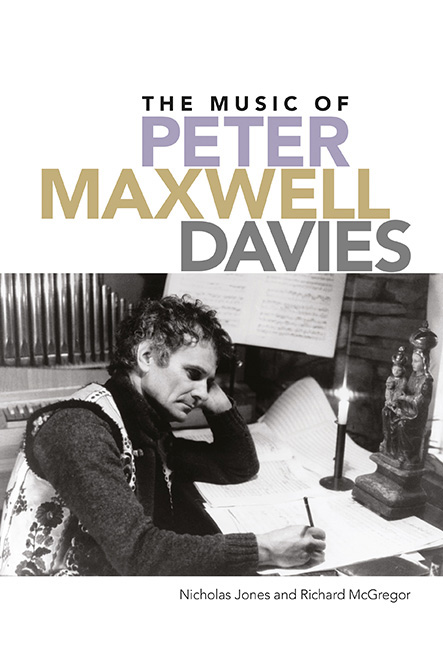Book contents
- Frontmatter
- Dedication
- Contents
- List of Illustrations
- Acknowledgements
- Prelude
- 1 Biography, Stylistic Development, Autobiography
- 2 Compositional Technique and Process
- 3 Genre
- 4 Form and Architecture
- 5 Tonality and Texture
- 6 Allusion, Quotation, Musical Critique
- 7 Landscape and Place
- Postlude
- Catalogue of Works
- Select Bibliography
- Index of Works by Peter Maxwell Davies
- General Index
2 - Compositional Technique and Process
Published online by Cambridge University Press: 27 March 2020
- Frontmatter
- Dedication
- Contents
- List of Illustrations
- Acknowledgements
- Prelude
- 1 Biography, Stylistic Development, Autobiography
- 2 Compositional Technique and Process
- 3 Genre
- 4 Form and Architecture
- 5 Tonality and Texture
- 6 Allusion, Quotation, Musical Critique
- 7 Landscape and Place
- Postlude
- Catalogue of Works
- Select Bibliography
- Index of Works by Peter Maxwell Davies
- General Index
Summary
EARLY WORKS
In terms of compositional processes Peter Maxwell Davies belongs to what might be thought of as the ‘second generation’ of post-war composers, developing their technique partly in the shadow of the Second Viennese School, but also further refracted by knowledge of the work of the leading European post-war practitioners. Those in Britain may well have been constrained in their composition studies by conservative composition teachers caught in an Elgarian/Delian post- Victorian chromaticism, but they were not under the same impulse to create a new musical language free from the many resonances and practices that European composers felt had stifled musical development before the war. Many British composers of Davies's generation (except perhaps Birtwistle) never felt the need to completely dismiss tonality as an organising principle and ‘tonics and dominants’, broadly conceived, would re-emerge subsequently in Davies’s articulation of his harmonic processes.
The youthful Davies wrote above forty works before he acknowledged the Trumpet Sonata as his Op. 1 at the age of twenty-one: some of these early works were generated by being ‘composer in residence’ for the BBC's Children's Hour radio programme. Of the works written before 1955 the piano work Parade, written in 1949, remained important enough to him to be incorporated as one of the generating sources for his Sixth Symphony. With his characteristic humour Davies commented:
As a child I wrote reasonably successful ‘light’ pieces – not too far removed from the ‘popular’ music which was the first I ever heard – along with ‘serious’ sonatas and other works: in the deepest vaults of the BBC in Manchester there are, possibly, the only manuscripts, still, of light works I played on ‘Children's Hour’, which I vaguely remember as being funny and quite outrageous – at the same time I played a very serious work called Parade, which elicited concerned consternation.
While the manuscript of Parade clearly indicates its adolescent origin in its annotations and in its presentation, the actual music is eclectic and diverse.
- Type
- Chapter
- Information
- The Music of Peter Maxwell Davies , pp. 51 - 102Publisher: Boydell & BrewerPrint publication year: 2020



